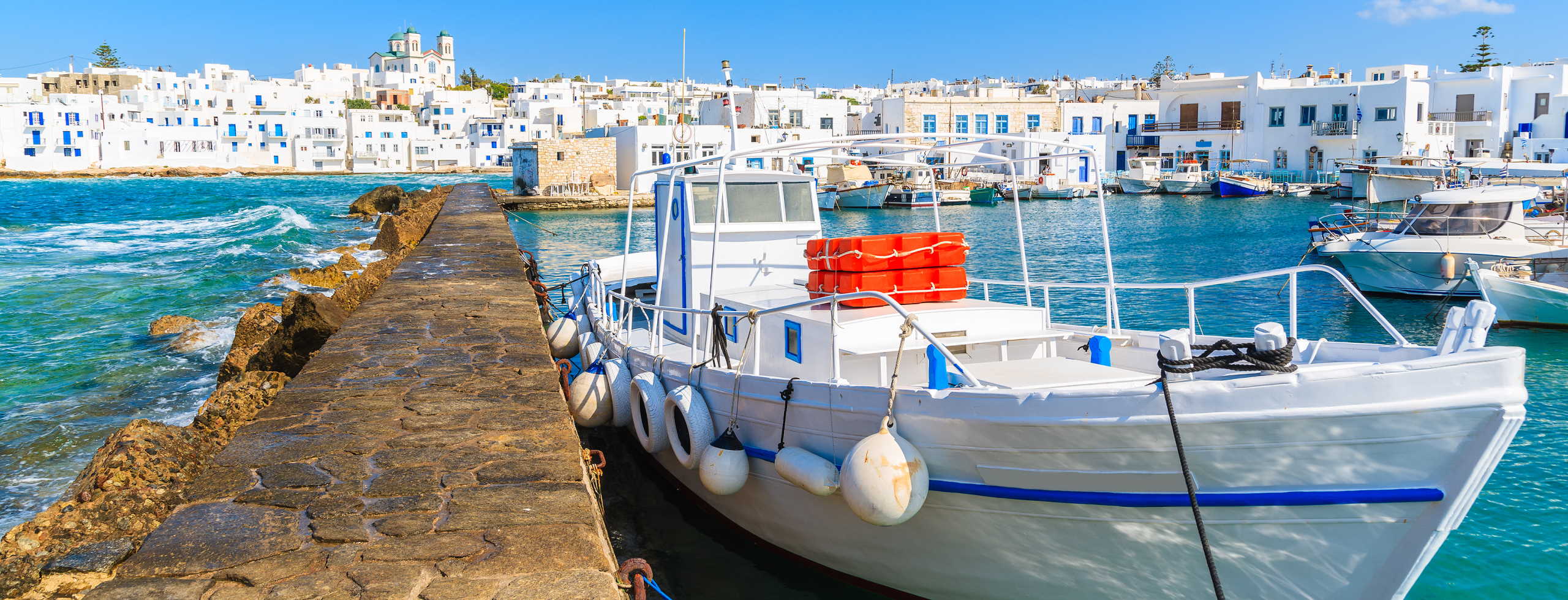-
Destinations
All Destinations
We'll craft an unsurpassed vacation just for you.
All you'll have to do is land
Choose your destination
- Pick your Trip
-
 Build your True Trip
Build your True Trip
- How It Works
- Blog
-

A Guide to Paros
by TrueTrips
- 1
PAROS THROUGH THE CENTURIES
Historical evidence suggests that Paros has been inhabited since the 32nd century BC. Drawn by its strategic position and fertile lands, the Minoans are believed to have been the first inhabitants to occupy the island giving it the name ‘Minoa’. By the 8th century BC, Paros had become a prosperous maritime power that was involved in trade with the Phoenicians and colonized other islands in the Aegean. Paros was famous for its quarries and renowned throughout ancient Greece for producing flawless white marble of exceptional quality. In fact, Parian marble was held in such high regard that it was used to sculpt several of the ancient world’s masterpieces including the famed statues of Medici Venus, Nike of Samothrace, and even the Parthenon’s roof tiles.
Following the death of Alexander the Great and the conclusion of the classical period, Paros, along with most of the Aegean islands, came under the rule of the Greek Ptolemies who were based in Egypt. The Romans annexed the Ptolemaic kingdom in 30 BC and thus, Paros came under Roman rule until 395 BC when its governance was transferred to the Byzantine Empire. The spread of Christianity under Byzantine rule led to the construction of many churches and monasteries in Paros including the island’s cathedral in Parikia, the Panagia Ekatontapiliani, which is considered to be one of the most important monuments of the early Christian era in Greece.
Following the death of Alexander the Great and the conclusion of the classical period, Paros, along with most of the Aegean islands, came under the rule of the Greek Ptolemies who were based in Egypt. The Romans annexed the Ptolemaic kingdom in 30 BC and thus, Paros came under Roman rule until 395 BC when its governance was transferred to the Byzantine Empire. The spread of Christianity under Byzantine rule led to the construction of many churches and monasteries in Paros including the island’s cathedral in Parikia, the Panagia Ekatontapiliani, which is considered to be one of the most important monuments of the early Christian era in Greece.
The Byzantine Empire was thrown into disarray when soldiers of the Fourth Crusade seized its capital of Constantinople in 1204 AD, and although it was eventually reclaimed in 1261 AD, by then the empire had lost many of its original territories, including Paros. In 1207 AD, Paros became part of the Duchy of the Archipelago, a collection of various Aegean islands under the rule of Venetian families, until it was conquered by the Ottoman Turks in 1537 AD.
Paros remained under Ottoman rule until the Greek revolution of 1821. Following the war, the Treaty of Constantinople was signed and Paros became part of the newly founded nation of Greece in 1832. In the ensuing decades, Paros remained a relatively poor island with its inhabitants primarily occupied with various forms of agriculture including fishing, and the production of olive oil, grains, grapes, and potatoes.
By the advent of the 20th century, the marble quarries that had made the island famous in ancient times had long ceased their operation. It wasn’t until the 1980s that Paros began to develop as a tourism destination, initially as a retreat for backpackers looking for cheaper alternatives to the more popular islands in the Aegean. Today Paros is fully immersed in the world of international tourism, and offers a wide range of quality accommodations and restaurants that cater to visitors of varying tastes and means.
Paros remained under Ottoman rule until the Greek revolution of 1821. Following the war, the Treaty of Constantinople was signed and Paros became part of the newly founded nation of Greece in 1832. In the ensuing decades, Paros remained a relatively poor island with its inhabitants primarily occupied with various forms of agriculture including fishing, and the production of olive oil, grains, grapes, and potatoes.
By the advent of the 20th century, the marble quarries that had made the island famous in ancient times had long ceased their operation. It wasn’t until the 1980s that Paros began to develop as a tourism destination, initially as a retreat for backpackers looking for cheaper alternatives to the more popular islands in the Aegean. Today Paros is fully immersed in the world of international tourism, and offers a wide range of quality accommodations and restaurants that cater to visitors of varying tastes and means.
